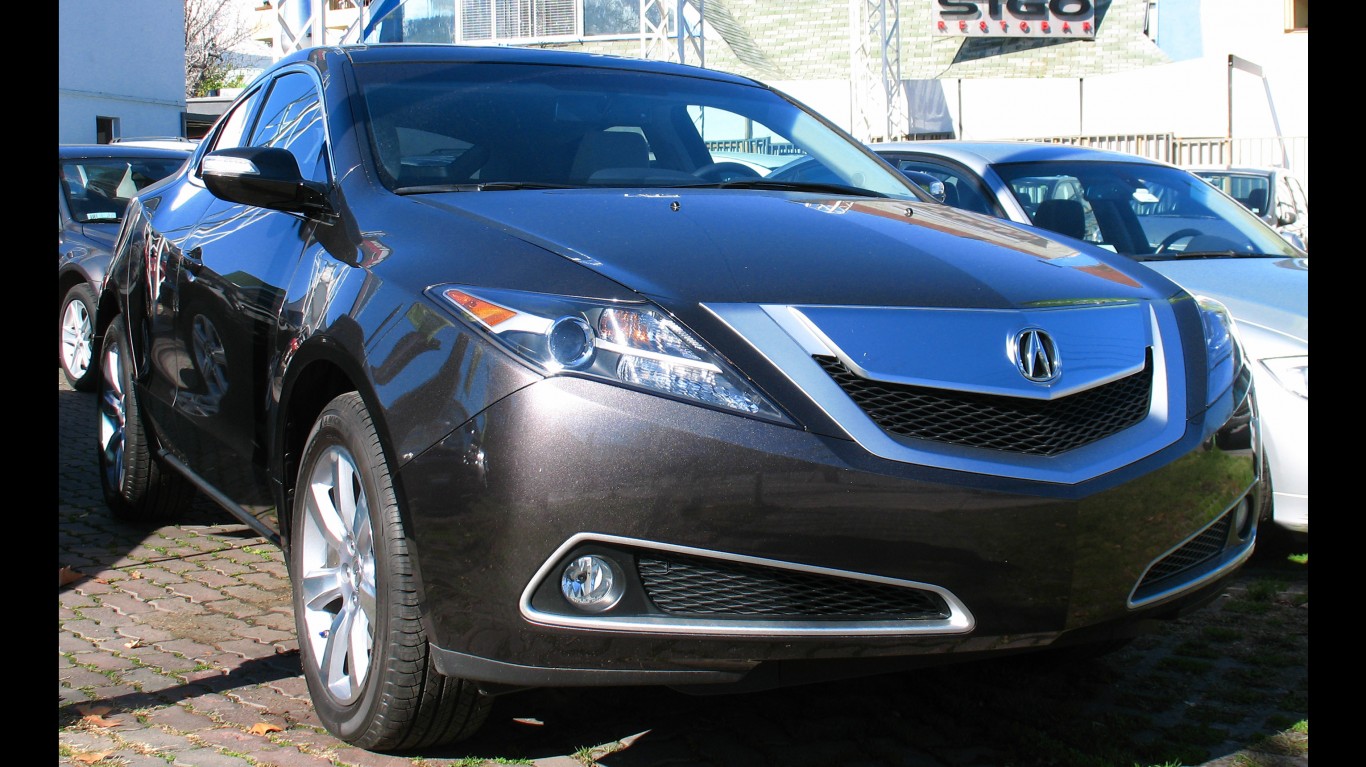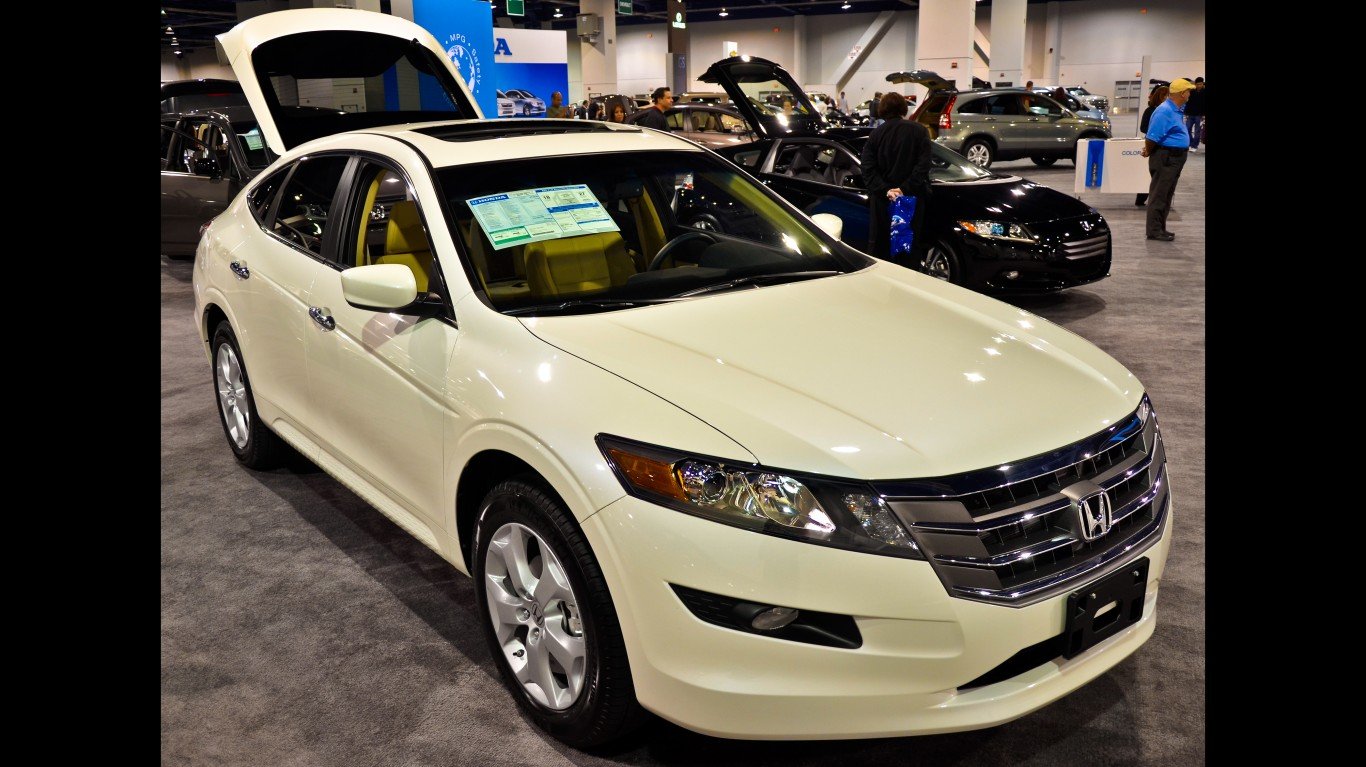

Years go into preparing a new car for regulators and the fiercely competitive U.S. auto market. New cars must pass a series of safety, performance, and consumer sentiment tests long before they reach dealership lots. Despite all precautions, however, sometimes a model launch doesn’t go according to plan, and the new car exhibits safety flaws or reliability issues. Sometimes it’s simply a matter of the overall design not appealing to buyers.
To identify the worst cars introduced this decade, 24/7 Wall St. considered reviews and scores by product review organizations like Consumer Reports and J.D. Power for all new models for the 2010s decade. The models on this list received poor reviews in measures like reliability, owner satisfaction, and safety. We only considered models for which the first full year of sales was 2010 or later. Many of the models on this list are owned by brands with poor sales and reputations in the United States in recent years, including brands like Fiat, Cadillac, and Scion.
A number of the models made this list of the worst new cars of the decade because of their exceptionally poor reliability ratings. In tests by groups like J.D. Power and Consumer Reports these vehicles had an unusually high number of serious problems. These are the new cars that are most likely to break down.
For most of the models on this list, the consequences of the poor reviews were usually disappointing sales and either a major redesign or being discontinued altogether. These are the worst-selling cars of the decade.
Click here to see 15 of the worst cars introduced this decade.
Correction: A previous version of this piece incorrectly implied that the Fiat 500X and 500L were being discontinued by Fiat. Rather, the Fiat 500 will be discontinued but the 500x and 500L will remain in production.

1. Mitsubishi i-MiEV
> First sold in US: 2011
> Type: subcompact hatchback
The i-MiEV was Japanese automaker Mitsubishi’s attempt at a fully-electric car. The i-MiEV disappointed eco-conscious buyers, thanks in part to its extremely low range of 62 miles and 14-hour charge time. The MiEV, or Mitsubishi innovative Electric Vehicle, failed to have a real impact on the U.S. auto market. Less than 2,200 units were sold during its 2011 to 2017 run, making it one of the worst-selling cars of the last decade.
[in-text-ad]
2. Acura ZDX
> First sold in US: 2009
> Type: mid-size SUV
Technically, the Acura ZDX went on sale in the U.S. in the final month of the 2000s, but with just 79 units sold before the 2010s, this one counts as one of the worst new cars of this decade.
Acura released the ZDX with a great deal of fanfare, but the car did not get the reception the company had hoped for. Among other issues, the sloping back design of the mid-size crossover did not sit well with buyers. Less than 6,200 of the model were sold in the United States during the car’s short run — Acura discontinued the ZDX after the 2013 model year.
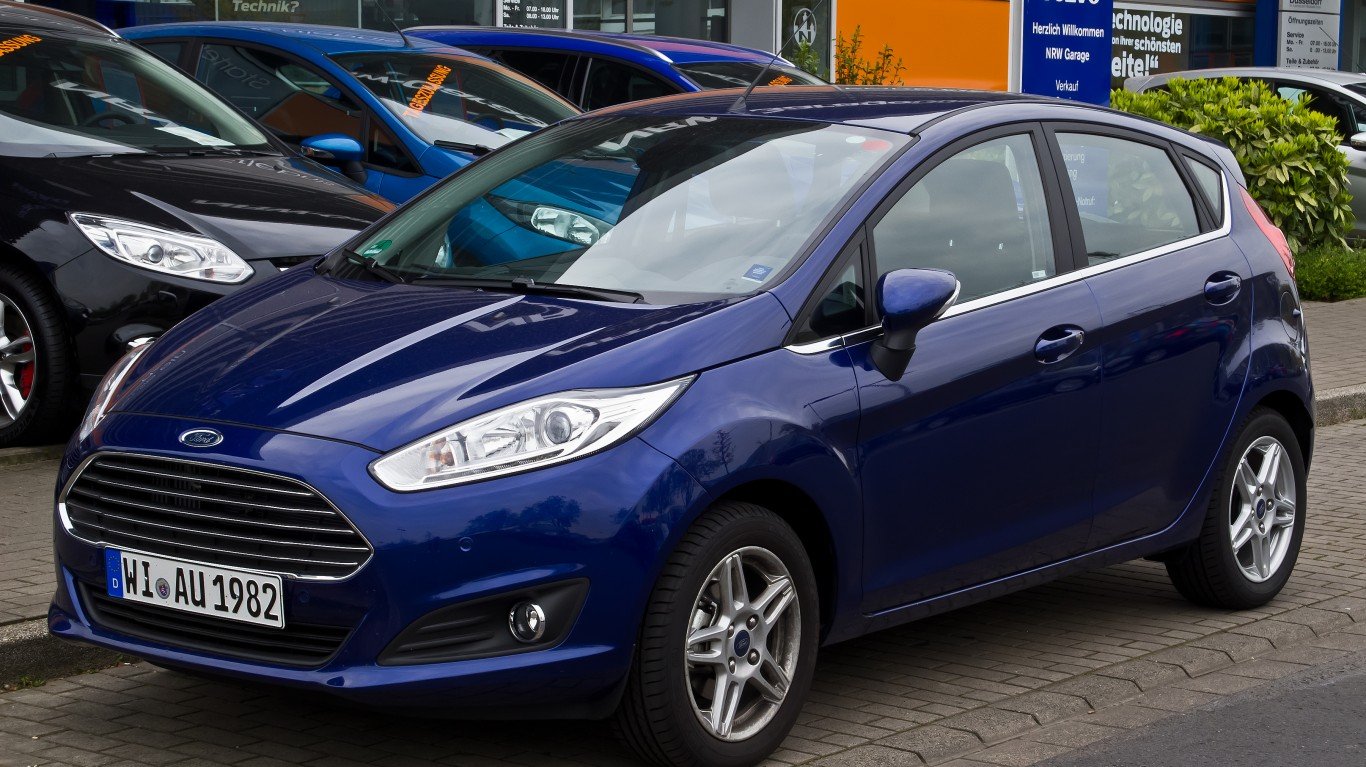
3. Ford Fiesta
> First sold in US: 2010
> Type: subcompact sedan
There was a Ford Fiesta sold in the 1970s and early ’80s that was discontinued. Ford reintroduced the model in 2010. Consumer Reports gave the most recent version of the Fiesta an overall score of 45 out of 100, making it one of the worst-reviewed recent models both in the subcompact class and among all new models. The Fiesta has also been subject to several recalls over the decade over different issues, including problems with the fuel pump, engine cooling system, and air bags.

4. Nissan Juke
> First sold in US: 2010
> Type: subcompact SUV
The first version of the Nissan Juke, which came out in 2010 for the 2011 model year, received an owner satisfaction score from Consumer Reports of 1 out of 5. That same year, J.D. Power gave the SUV a 2-star rating for initial quality. U.S. News and World Report cited several problems with the car, including a rough ride quality, a small rear seat and cargo area, and a subpar interior.
[in-text-ad-2]
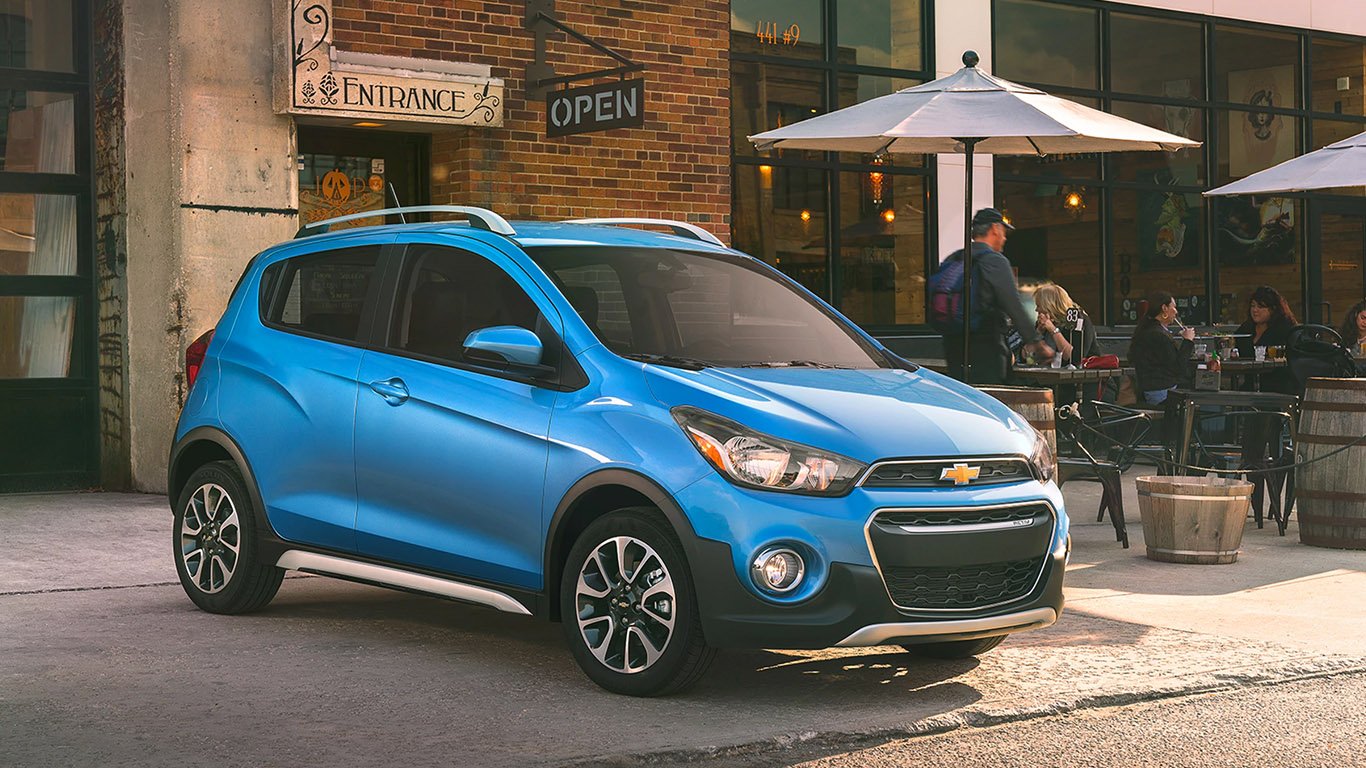
5. Chevrolet Spark
> First sold in US: 2012
> Type: subcompact hatchback
In 2012, the first year the Chevy Spark was launched, Consumer Reports named it one of the worst cars of the year, citing a cramped, noisy cabin, a stiff and jittery ride, and an underwhelming fuel economy, given its status as a subcompact.
The 2020 edition of the Spark received a score of just 48 out of 100, one of the worst scores Consumer Reports awarded for 2020 models.
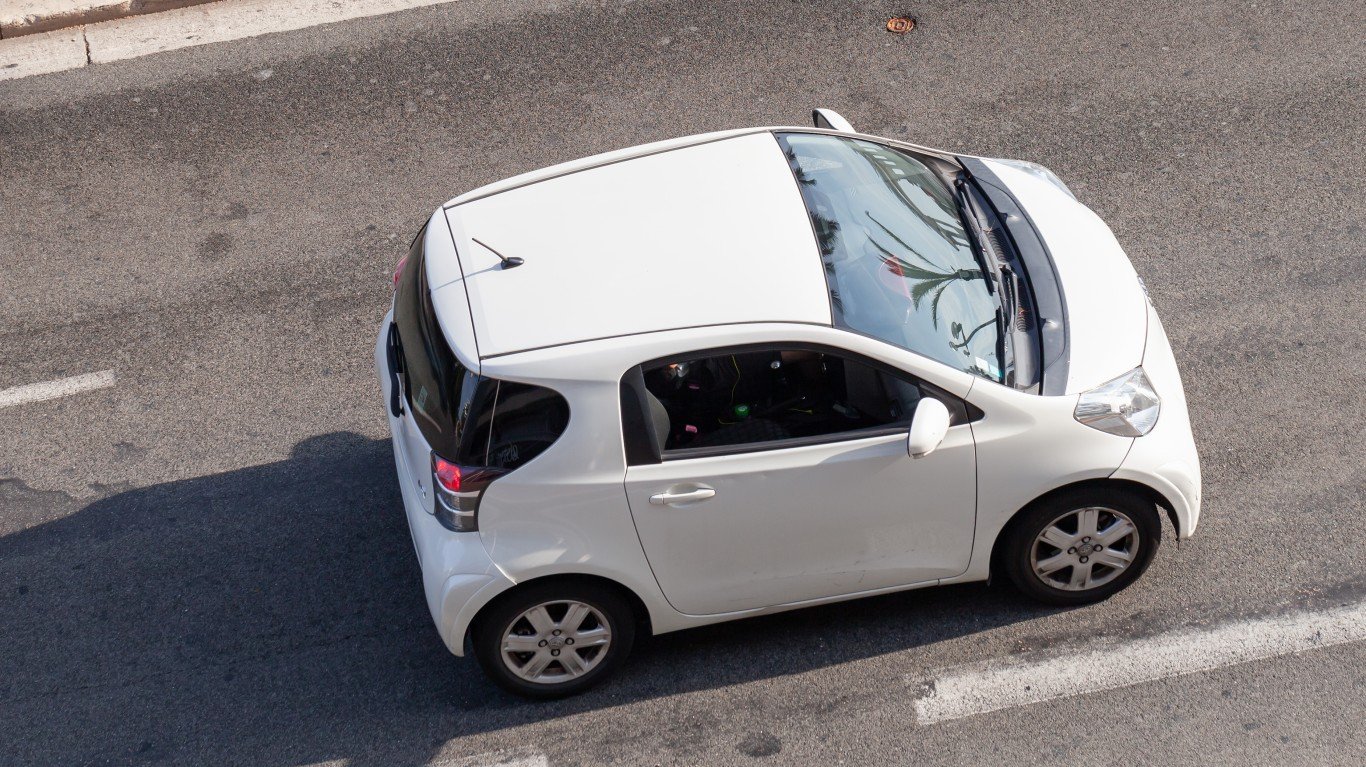
6. Scion iQ
> First sold in US: 2011
> Type: mini hatchback
Since it was introduced in 2002, Scion models struggled to find traction in the United States before the Toyota-owned brand was discontinued in 2016. One example of the brand’s woes it the iQ, Scion’s take on the microcar, which Consumer Reports called slow, noisy, and uncomfortable. The iQ only lasted a few years on the market, failing to break 9,000 units sold in the U.S. market in its first full year.
[in-text-ad]
7. Honda Crosstour
> First sold in US: 2011
> Type: mid-size SUV
The Honda Crosstour was an unusual model, similar in many ways to the Acura ZDX, and it suffered from similar design criticisms as the ZDX. After a model update, Consumer Reports listed it as one of the worst cars of 2013, noting, “Designed to blend a sedan and an SUV, this platypus crossover doesn’t do either well.” Consumer Reports also noted that the car’s roof design created blind spots.

8. Mitsubishi Mirage
> First sold in US: 2013
> Type: subcompact hatchback
When the Mitsubishi Mirage debuted in 2013, Consumer Reports listed it as one of the worst cars of the year, pointing to the car’s poor acceleration. The organization noted that the car’s handling was “reminiscent of 1980’s standards” and gave the car an overall score of 31 out of 100, one of the very worst scores awarded to any vehicle of any type.
U.S. News and World Report gave the 2019 edition of the car a score of 5 out of 10, pointing to the car’s dull engine and “harsh ride.”
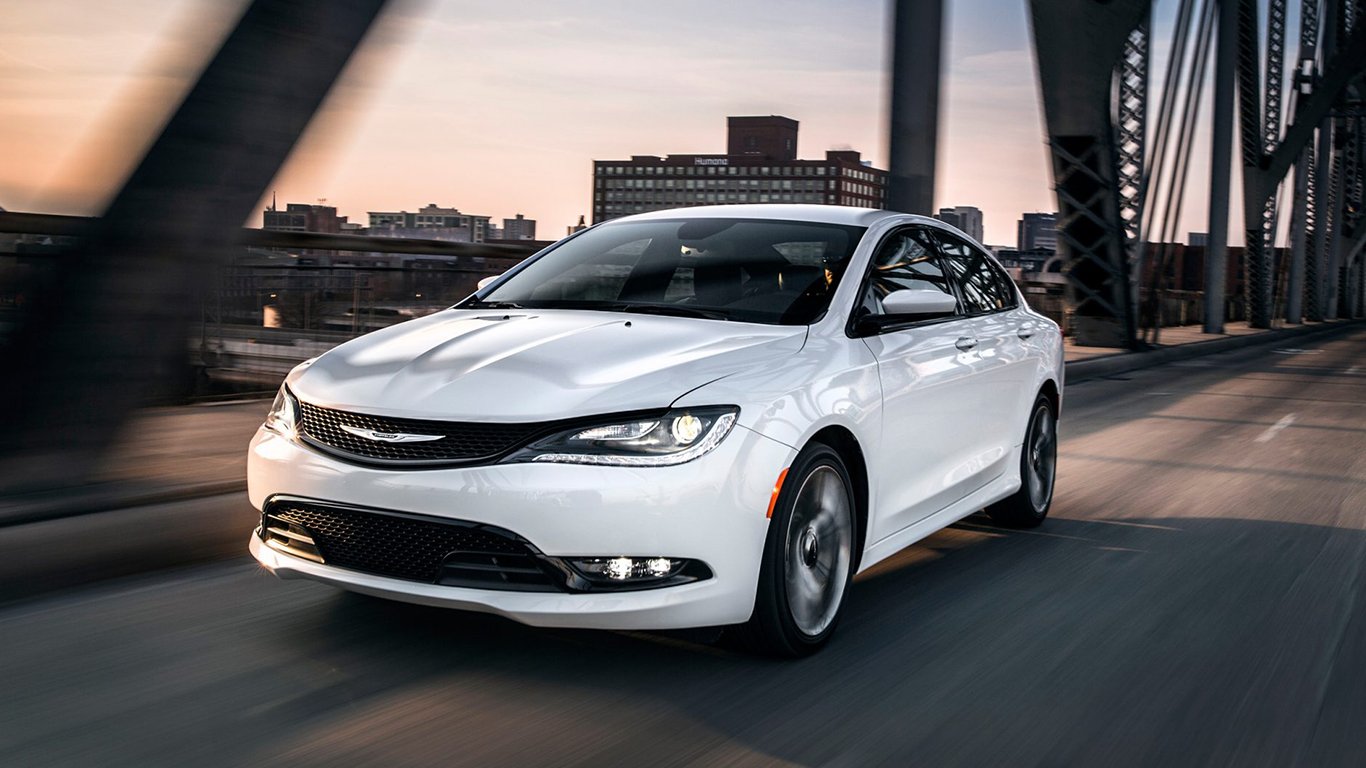
9. Chrysler 200
> First sold in US: 2012
> Type: mid-size sedan
In 2011, Chrysler remodeled the Sebring and renamed it the 200. The car had poor sales throughout its history and finally was discontinued in 2016, shortly after a model redesign for the 2015 model year. The car struggled with performance issues and other engineering problems. Consumer reports awarded the 2015 redesign its worst possible reliability and owner satisfaction scores.
[in-text-ad-2]
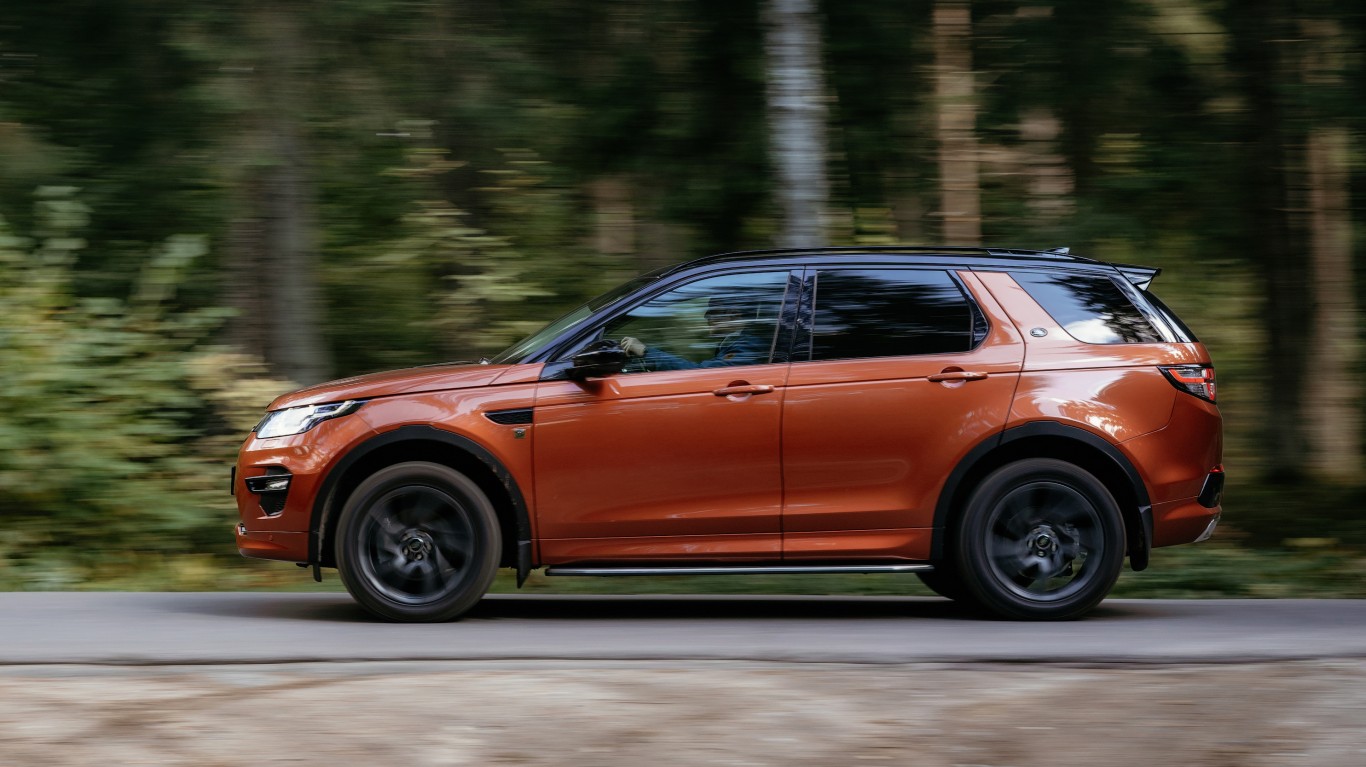
10. Land Rover Discovery Sport
> First sold in US: 2015
> Type: compact SUV
Consumer Reports gave the 2020 model of the Discovery Sport, a compact SUV, an overall score of 44 out of 100, and awarded predicted reliability and predicted owner satisfaction scores of 1 out of 5. U.S. News and World Report noted the 2019 edition of the car was a disappointment because of poor handling and “terrible” predicted reliability.

11. Fiat 500L
> First sold in US: 2013
> Type: compact sedan
As a brand, Fiat has struggled mightily in the United States, and the 500L is a perfect example. Fiat sold an average of less than 6,000 500L units per year since the car was introduced in 2013.
Consumer Reports gave the 2020 edition of the model an overall score of just 29, which is one of the worst of any car in any category. In its rating of the model, Consumer Reports notes that the 500L “feels undercooked and has several significant flaws.” Among the flaws mentioned were an uncomfortable driving position, poor seats, and a poor small-overlap front crash test rating from the IIHS.
[in-text-ad]
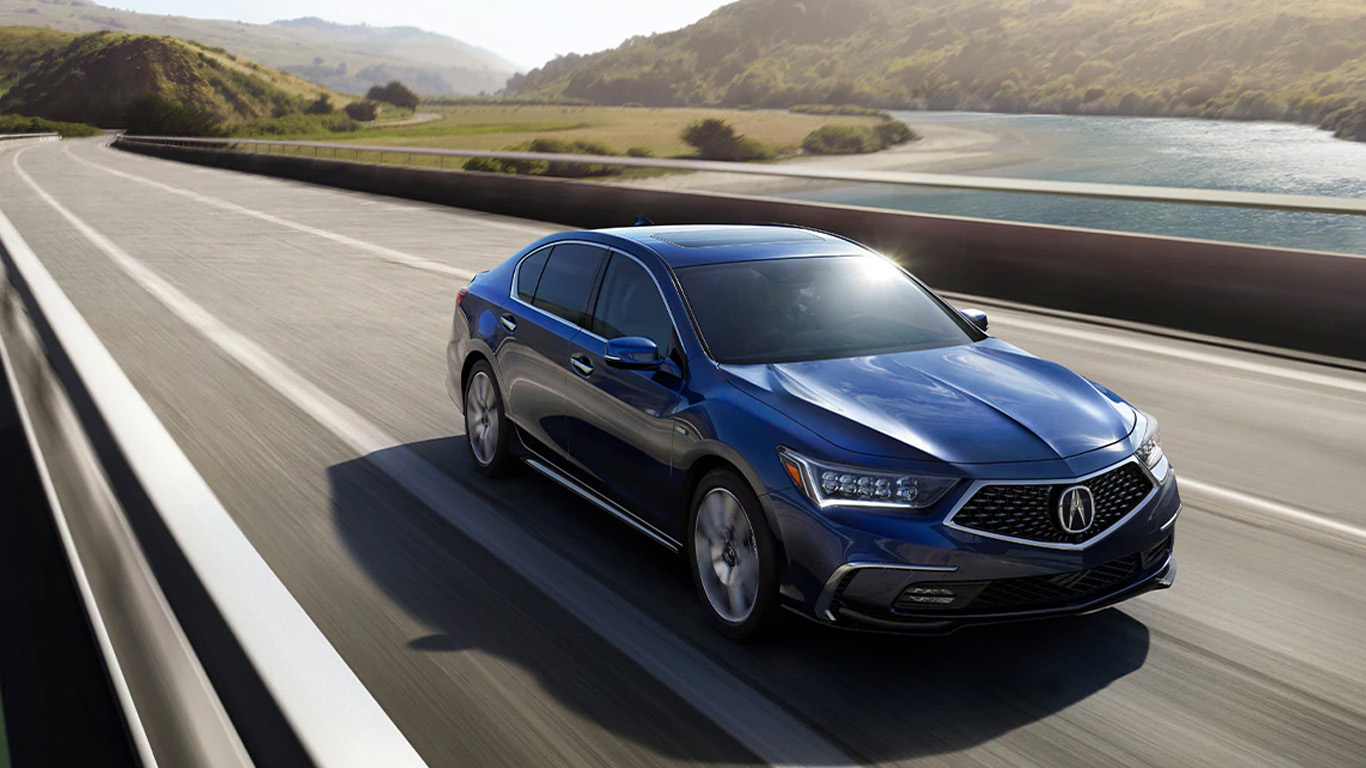
12. Acura RLX
> First sold in US: 2013
> Type: full-size sedan
One site called the RLX, Acura’s full-size sedan, “the worst luxury car ever,” pointing to disappointing comfort and materials given the car’s luxury price tag. Sales have been poor for the RLX, with barely 16,000 units sold in the U.S. over the course of seven years.
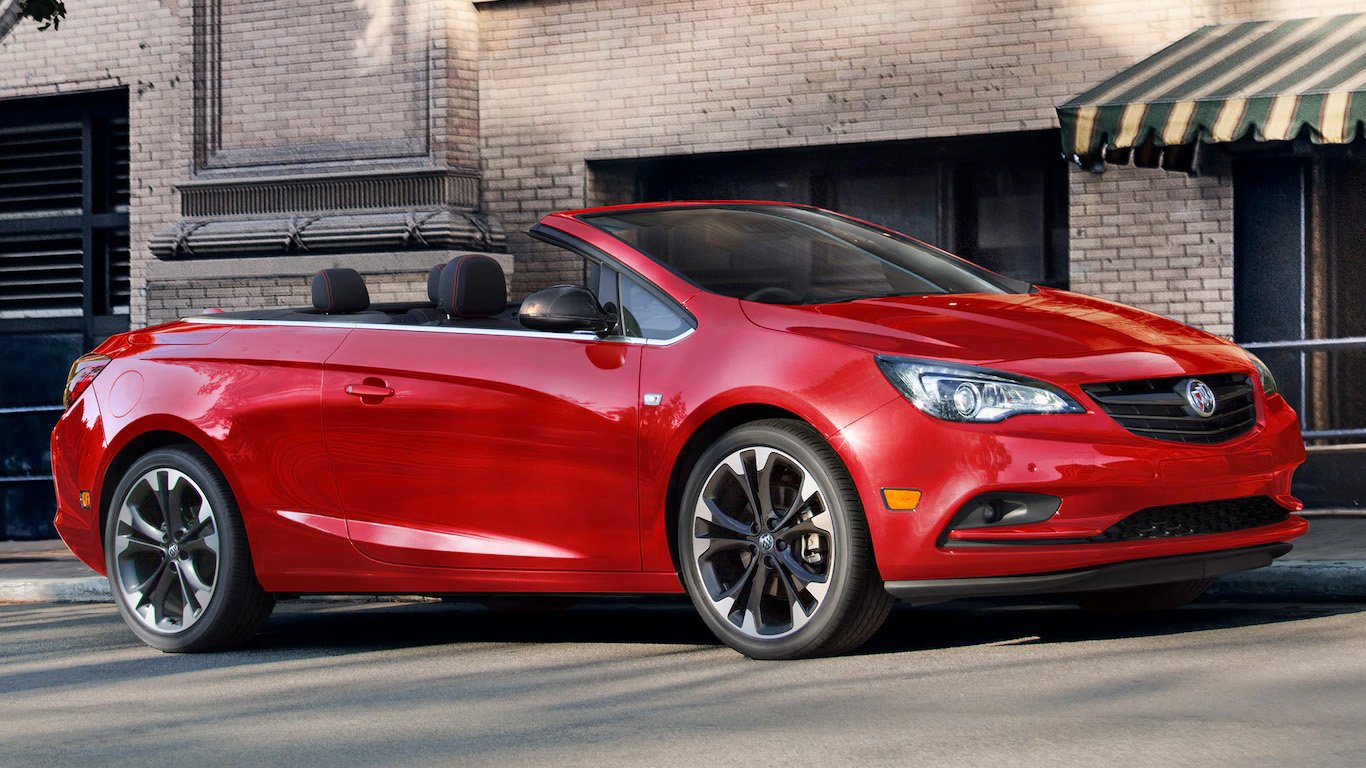
13. Buick Cascada
> First sold in US: 2016
> Type: compact convertible
The Cascada’s sales have been dismal, with just 7,153 units sold in the U.S. market in the first year — and sales have been declining every year since, to just 2,458 through the first three quarters of 2019.
Consumer Reports awards the latest version of the Convertible an overall score of 51 out of 100. J.D. Power gives the model points for its relatively low starting price and reliability, but notes the car’s “outdated styling, materials, and technology” as well its unsupportive seats.
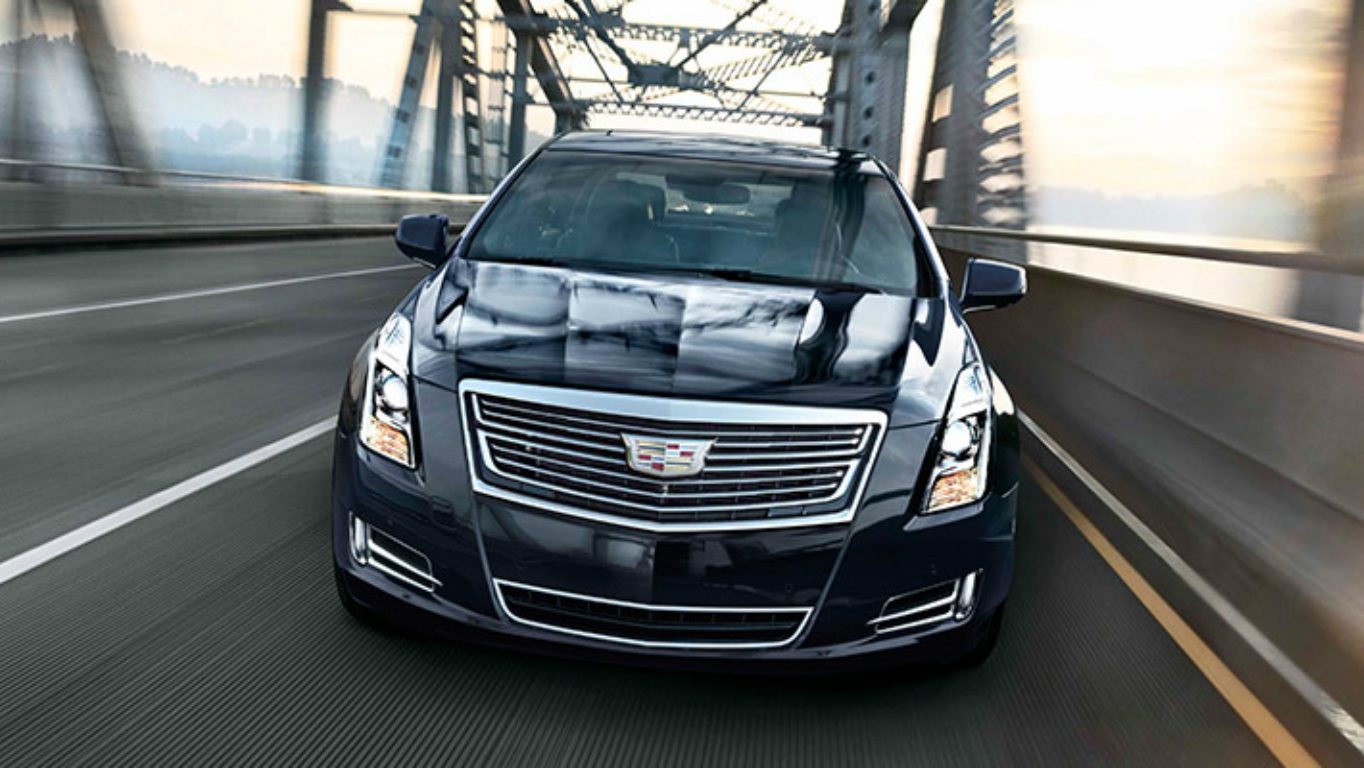
14. Cadillac XTS
> First sold in US: 2012
> Type: full-size sedan
In its review of the car, J.D. Power notes that the 2019 XTS “ranks near the bottom of the luxury large car class,” and that “rivals offer better performance, more-refined interiors, and higher predicted reliability ratings.” Consumer Reports gave the first version of the XTS predicted reliability and owner satisfaction scores of 1 out of 5.
[in-text-ad-2]
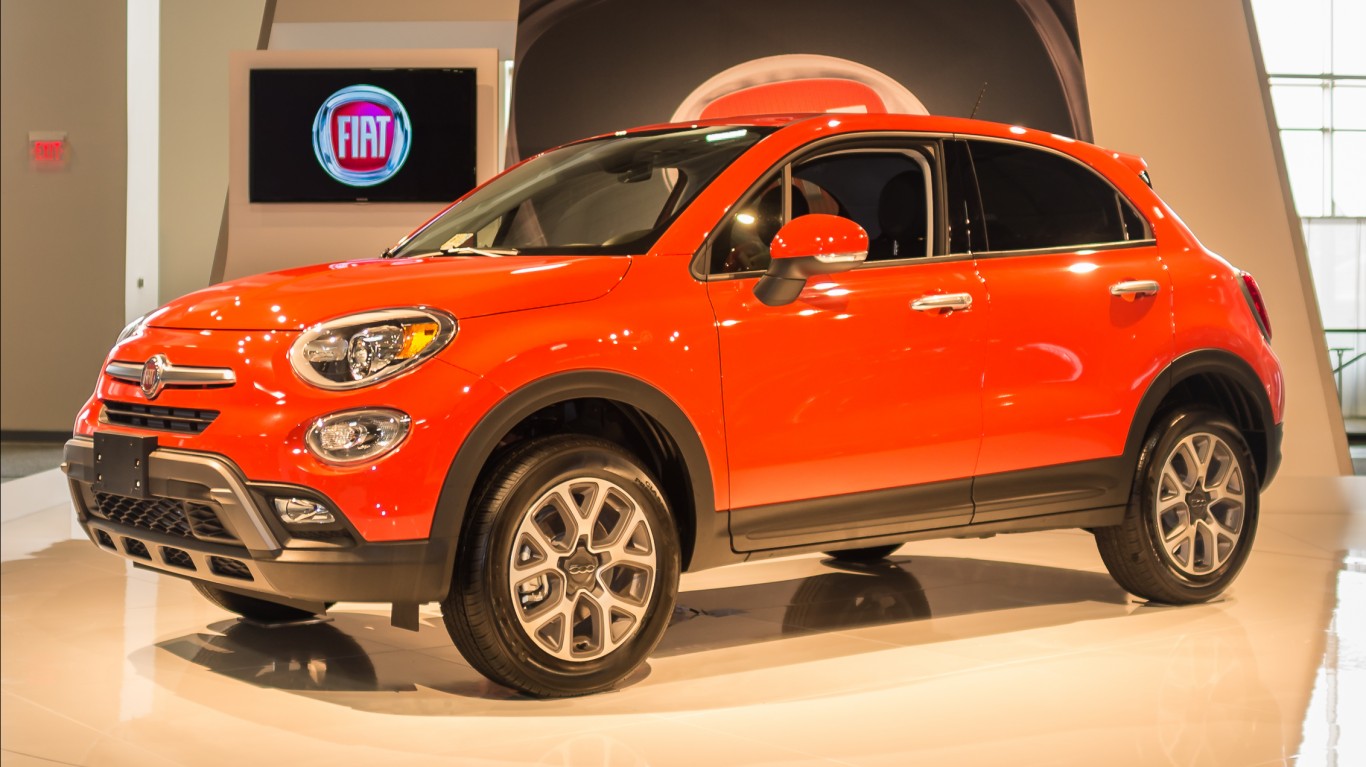
15. Fiat 500X
> First sold in US: 2015
> Type: subcompact SUV
The 500X has more horsepower and is more fuel efficient than the 500L, but it also costs more. In its summary of the car, Car and Driver noted the car’s high price for its class and other lowlights, such as a small interior and low cargo space. Consumer Reports gave the car a score of just 35 out of 100. Recently, the 500, the predecessor of the 500x, was discontinued by the auto brand, which has struggled to translate the success of its popular European city cars to the U.S. market.
Sponsored: Find a Qualified Financial Advisor
Finding a qualified financial advisor doesn’t have to be hard. SmartAsset’s free tool matches you with up to 3 fiduciary financial advisors in your area in 5 minutes. Each advisor has been vetted by SmartAsset and is held to a fiduciary standard to act in your best interests. If you’re ready to be matched with local advisors that can help you achieve your financial goals, get started now.
Thank you for reading! Have some feedback for us?
Contact the 24/7 Wall St. editorial team.
